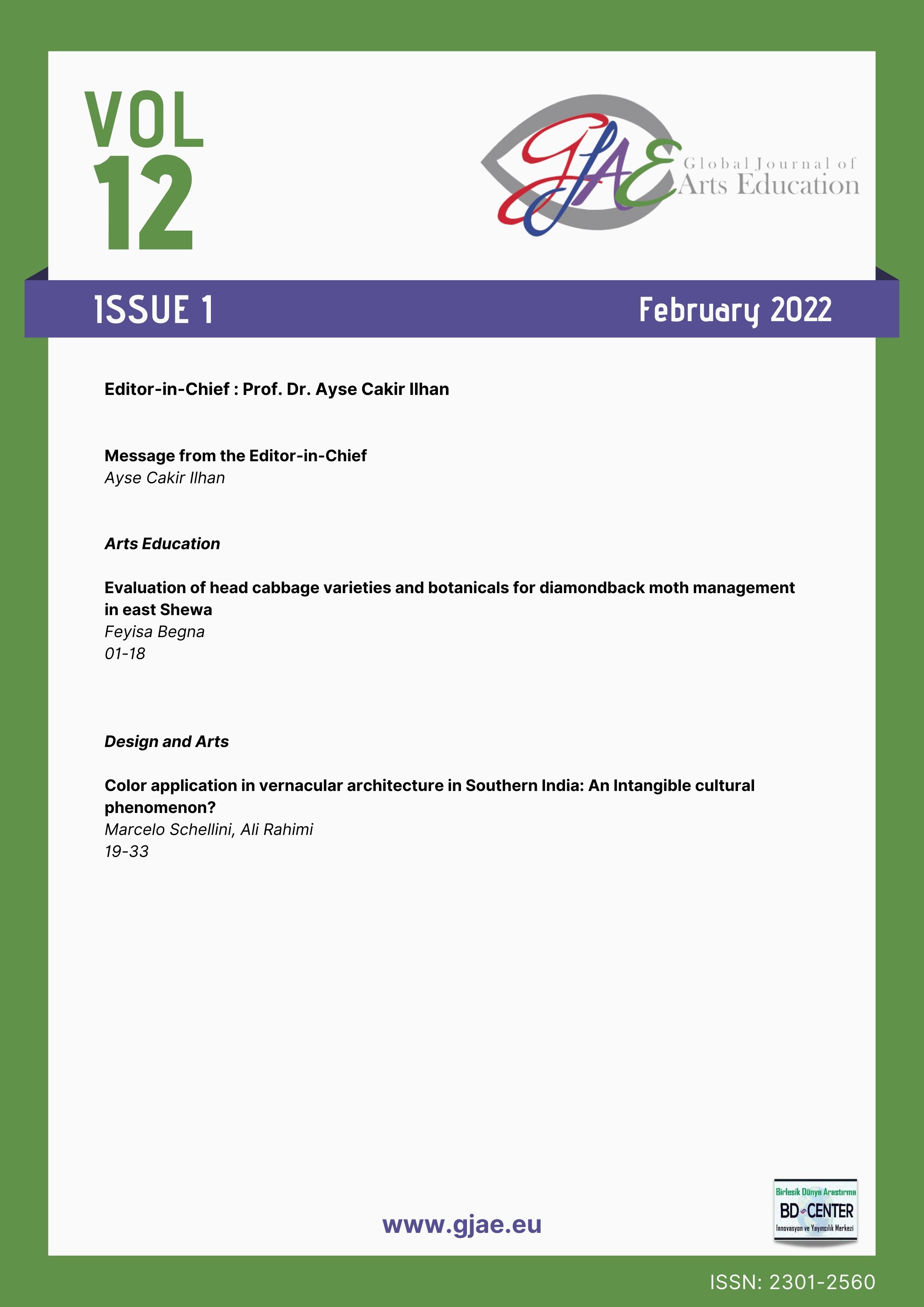Color application in vernacular architecture in Southern India: An Intangible cultural phenomenon?
Main Article Content
Abstract
The study of color aesthetics should always consider color interactions. This study aimed to understand the color application in southern India by identifying it in the cityscapes and analyzing its characteristics. Field observations, a survey, and interviews were undertaken. An online questionnaire was administered to 39 undergraduate and master’s degree students in Industrial Design courses at VIT University Vellore. The article discusses the appropriate methodology for color criticism research and its multidisciplinary field. The study concludes that color in Southern India has a complex and elaborated application. Color contrast and saturation can be used not merely to enhance and distinguish shapes and forms creating the visual effect of detachment between its elements but as a paradoxical economic status indicator.
Keywords: Architecture; Color; Criticism; Design; India; Visual Culture.
Downloads
Article Details

This work is licensed under a Creative Commons Attribution 4.0 International License.
Authors who publish with this journal agree to the following terms:
- Authors retain copyright and grant the journal right of first publication with the work simultaneously licensed under a Creative Commons Attribution License that allows others to share the work with an acknowledgement of the work's authorship and initial publication in this journal.
- Authors are able to enter into separate, additional contractual arrangements for the non-exclusive distribution of the journal's published version of the work (e.g., post it to an institutional repository or publish it in a book), with an acknowledgement of its initial publication in this journal.
- Authors are permitted and encouraged to post their work online (e.g., in institutional repositories or on their website) prior to and during the submission process, as it can lead to productive exchanges, as well as earlier and greater citation of published work (See The Effect of Open Access).

